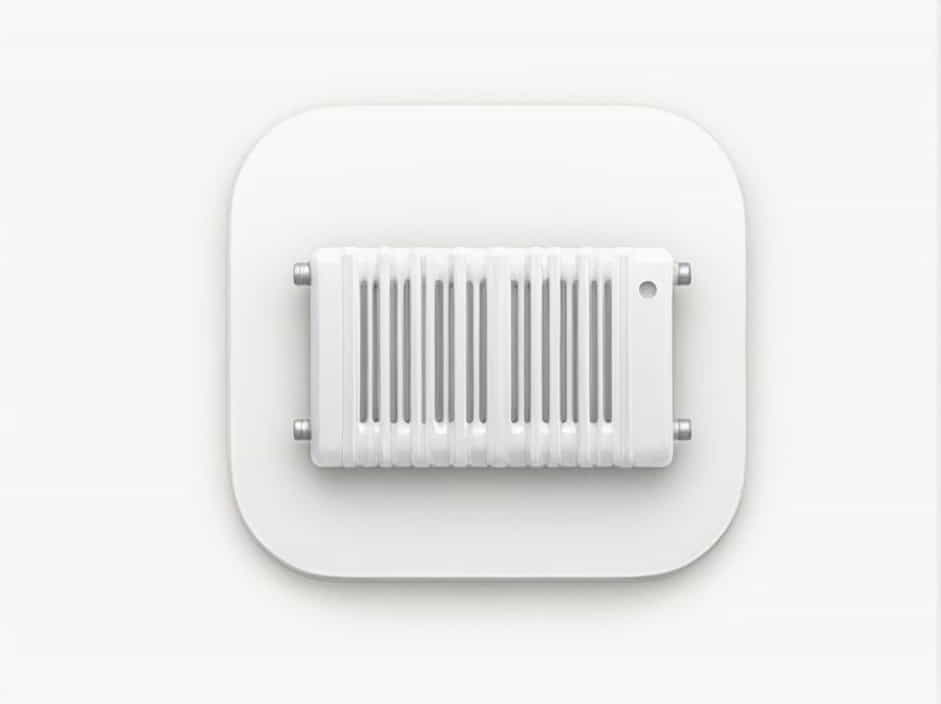A properly functioning radiator should distribute heat evenly from top to bottom. However, many homeowners experience an issue where the radiator is hot at the top but lukewarm or cold at the bottom. This can lead to reduced heating efficiency, higher energy bills, and discomfort during colder months.
If you’re facing this problem, don’t worry-it’s a common issue with several possible causes and solutions. In this guide, we’ll explore why your radiator is not heating evenly and how to fix it effectively.
Why Is My Radiator Hot at the Top but Cold at the Bottom?
1. Sludge or Debris Buildup
Over time, rust, dirt, and debris can accumulate at the bottom of your radiator. This sludge buildup prevents hot water from circulating properly, causing the top to heat up while the bottom remains lukewarm or cold.
2. Air Trapped in the Radiator
Air can get trapped in the radiator, stopping hot water from fully circulating. This often leads to the top becoming hot while the lower section stays cooler.
3. Blocked Radiator Valve
A partially closed or blocked valve can restrict water flow, leading to uneven heating.
4. Inefficient Pump or System Pressure
A weak or failing circulating pump may not be powerful enough to push hot water through the radiator system properly. Low system pressure can also cause uneven heating.
5. Incorrect Radiator Balancing
If some radiators in your home heat up faster than others, your heating system may be unbalanced. This happens when certain radiators receive more hot water than others.
How to Fix a Radiator That’s Hot at the Top but Cold at the Bottom
1. Bleed Your Radiator to Remove Trapped Air
Tools Needed:
-
Radiator key
-
Small container or towel
Steps:
-
Turn off the heating system.
-
Locate the bleed valve (usually at the top corner of the radiator).
-
Place a towel or container under the valve.
-
Use the radiator key to slowly turn the valve counterclockwise.
-
Listen for hissing air escaping. Once water starts coming out, close the valve.
-
Turn the heating system back on and check for improvements.
If air was the issue, your radiator should now heat evenly.
2. Flush the Radiator to Remove Sludge and Debris
If bleeding doesn’t fix the issue, the radiator may have sludge buildup. A radiator flush helps clear rust, dirt, and blockages.
Steps:
-
Turn off the heating system and let it cool.
-
Place a bucket under the radiator valves.
-
Close both valves and use a wrench to detach the radiator from the wall.
-
Take the radiator outside and attach a hose to one end.
-
Flush water through it until it runs clear.
-
Reattach the radiator, open the valves, and turn the heating back on.
If the radiator now heats evenly, sludge buildup was the problem.
3. Check and Adjust the Radiator Valves
Types of Radiator Valves:
-
Lockshield Valve: Controls water flow.
-
Thermostatic Radiator Valve (TRV): Adjusts temperature.
Steps to Check Valves:
-
Ensure the thermostatic valve is fully open.
-
Check the lockshield valve (located at the opposite end).
-
Slightly adjust the lockshield valve to balance water flow.
-
If a valve is stuck, try gently turning it with a wrench or replace it if necessary.
4. Balance the Heating System
If some radiators heat up faster than others, your system needs balancing.
Steps:
-
Turn off the heating and let it cool.
-
Fully open all radiator valves.
-
Turn the heating back on and identify which radiators heat up first.
-
Slightly close the lockshield valve on the fastest-heating radiators.
-
Leave slower-heating radiators fully open.
-
Repeat the process until all radiators heat evenly.
5. Check the Central Heating Pump
A failing pump reduces water circulation, causing uneven heating.
Signs of a Weak Pump:
✔ Strange noises coming from the boiler or pipes
✔ Slow heating in multiple radiators
✔ System pressure drops frequently
Solution:
-
Increase the pump speed setting (if adjustable).
-
If the pump is old, consider replacing it with a more powerful model.
6. Use a Central Heating Inhibitor
A central heating inhibitor helps prevent sludge buildup and extends the life of your system.
How to Add an Inhibitor:
-
Turn off the heating system.
-
Drain some water from the system using a drain valve.
-
Add the inhibitor through a radiator or expansion tank.
-
Turn the heating back on to circulate the chemical.
This helps prevent future blockages and keeps radiators working efficiently.
When to Call a Professional
If you’ve tried the above solutions and your radiator still isn’t heating properly, it may be time to call a heating engineer.
Signs You Need Expert Help:
✔ Multiple radiators in your home are affected
✔ Your boiler pressure keeps dropping
✔ The heating system makes loud noises
✔ There are leaks or visible corrosion
A professional can perform a power flush, check for hidden blockages, and ensure your boiler and pump are functioning correctly.
Preventing Radiator Issues in the Future
✅ Regular Maintenance
-
Bleed radiators every few months.
-
Check valves for signs of wear.
-
Monitor system pressure and refill if needed.
✅ Install a Magnetic Filter
A magnetic filter collects metallic debris before it builds up inside the radiator.
✅ Use Quality Heating Inhibitors
Adding an inhibitor helps prevent sludge and keeps your system running efficiently.
A radiator that’s hot at the top but lukewarm at the bottom is usually caused by trapped air, sludge buildup, blocked valves, or poor water circulation. By following the steps outlined in this guide-bleeding, flushing, checking valves, and balancing the system-you can restore even heating and improve energy efficiency.
Regular maintenance, inhibitors, and professional servicing will help prevent future issues, ensuring your home stays warm and comfortable throughout the colder months.
